More grunt, improved rider aids and electronic suspension option for Honda’s understated parallel twin tourer
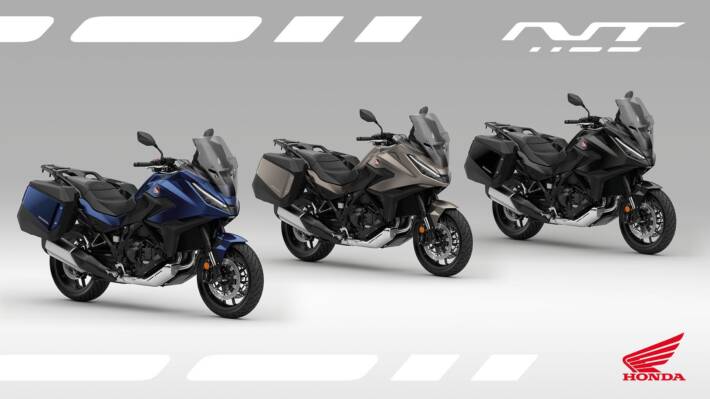
If there’s a firm that specialises in making more from less, it’s Honda. Over the years, it’s produced a stack of bikes which have looked pretty dull on paper – but which are great to ride, and sell by the truckload.
And that latest on that list is the Honda NT1100 tourer – a rather anonymous-looking bike, based on the engine and frame from the CRF1100 Africa Twin, with shorter suspension, roadbike wheels tyre and brakes, and a conventional sport-touring riding position.
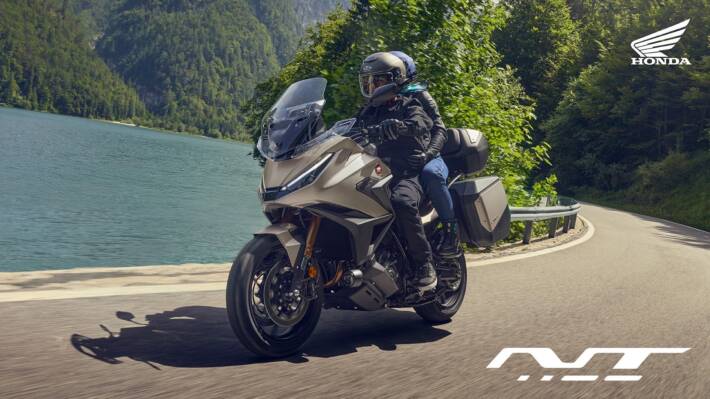
Launched in 2022, it has been a quiet hit for the big H, selling more than 12,000 units, and being the top-selling bike in class across Europe. It was a chunky beast at 238kg, and not hugely powerful, making just 100bhp from the SOHC twin-cylinder engine. A DCT dual clutch transmission option added an automatic gearbox – as well as an extra 10kg – and has also been popular amongst buyers.
And now Honda’s updated the NT1100 (the last NT was the NT700V Deauville by the way) for 2025, with top-end engine mods, extra electronic kit, revised bodywork and equipment – together with an optional semi-active electronic suspension setup from Showa.
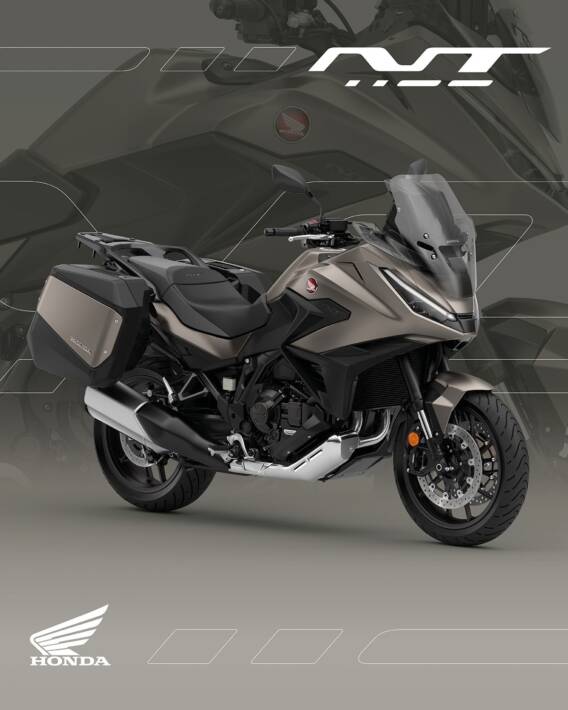
Kicking off with the engine, there’s no more power, Honda clearly thinking that 100bhp is ample here, but you get more midrange torque instead, which is up by 7Nm, and comes in 750rpm sooner.
The improvements come from detail mods to the top end: a bit more compression, bigger intake trumpets, altered injector geometry and altered ECU settings. The DCT model has a revised shifting schedule, and also takes input from a new IMU inertial measurement unit to improve shifting when cornering.
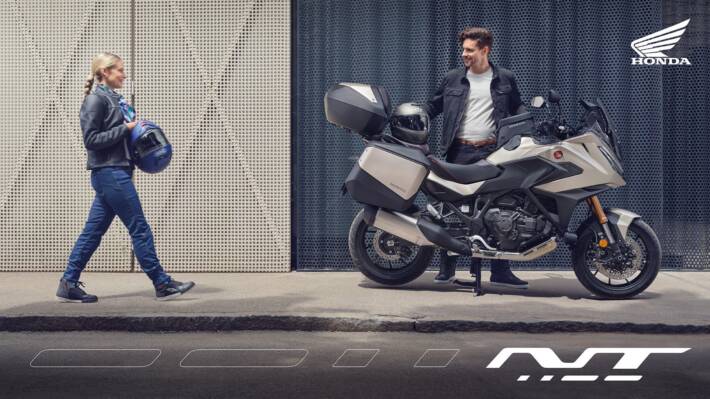
The six-axis IMU also works with the rider aids: ABS, traction control and wheelie control, as well as rider power modes.
The big story on the chassis is the new Showa Electronically Equipped Ride Adjustment (Showa-EERA) option.
Already seen on Honda’s Africa Twin Adventure Sports (and now also available on the Africa Twin) and with settings specifically developed for the NT1100, the system is claimed to automatically provide optimum damping force relative to the stroke speed, by adjusting the damping level based on information from three sources: bike speed (from the ECU), the bike’s stance and attitude (from the Inertial Measurement Unit) and the fork behaviour (from the stroke sensor).
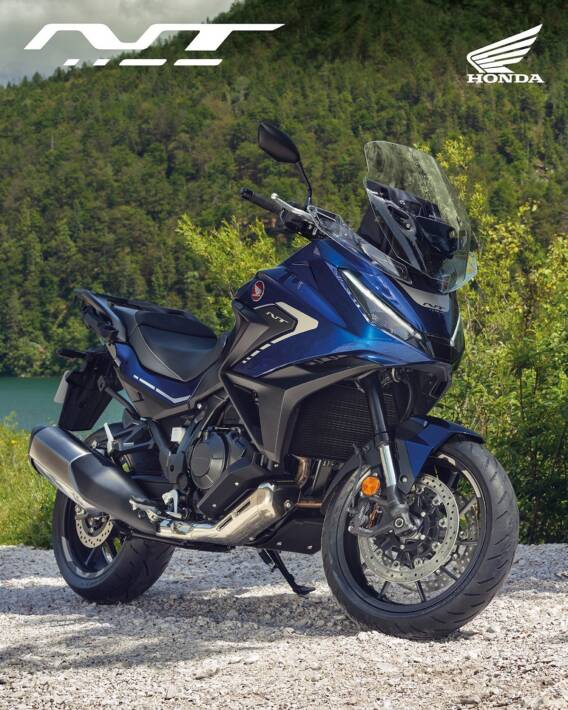
The suspension ECU adjusts suspension behaviour within a claimed 15 milliseconds (0.015 seconds) of these calculations being made. Honda also says the system’s flexibility means that damping adjustment can be programmed to change as the vehicle speed changes – allowing firmer damping at higher speeds, for example.
That means the rider can select all-round urban ride comfort, high speed touring stability or precise response in the rain at the touch of the meter. Showa-EERA also reduces excessive dive under hard braking.
There are three pre-defined suspension modes:
- URBAN is the equivalent of the standard Showa suspension setup, for agile handling in a wide range of situations.
- TOUR delivers maximum braking and turning stability and the firmest damping for high speeds and two-up, fully laden touring.
- RAIN softens damping reaction to smooth and slow suspension response in wet conditions.
- USER allows a personal choice of damping and preload settings.
The new Showa-EERA also offers the rider the ability to precisely adjust rear spring preload through 24 steps while on the move.
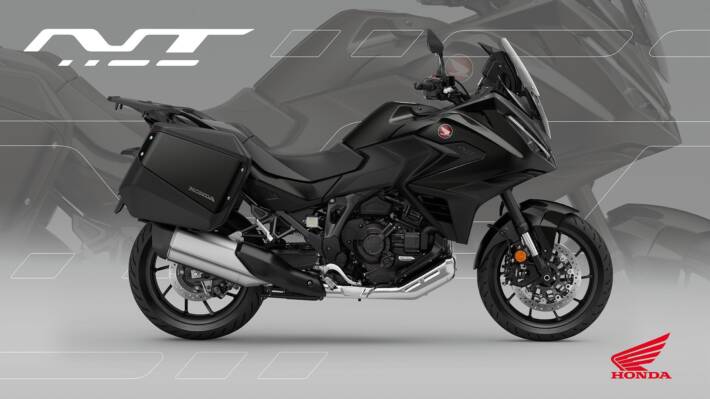
On the standard NT1100, you get a conventional Showa setup; 43mm Showa cartridge-type inverted front forks with 150mm travel and preload adjustability.
Like the forks, the single-tube pressurised Showa rear shock offers 150mm axle travel and uses a 14mm diameter rod. To make carrying a pillion and/or luggage easier, there’s a remote hydraulic spring preload adjuster.
Finally, there’s a new bodywork setup on the 1100: reprofiled upper and lower wind deflectors work in unison for even better weather protection, and a revised, longer front mudguard contributes to the same cause.
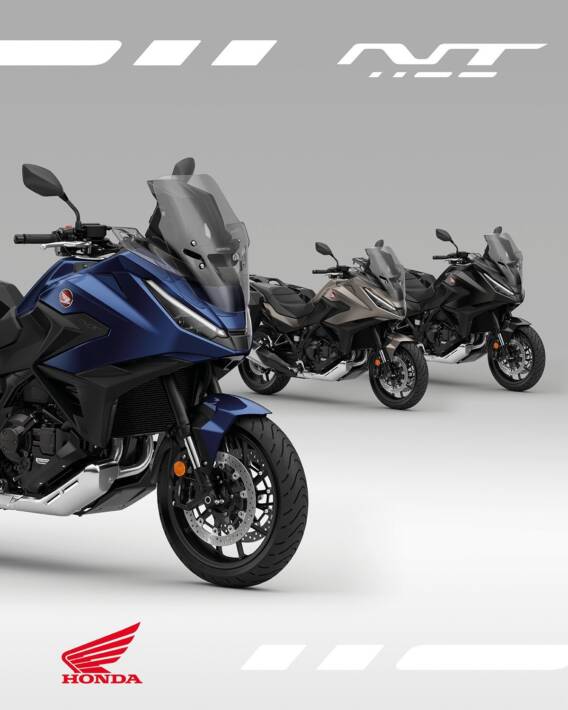
The adjustable screen can now be operated one-handed by the rider from a seated position, whilst the larger, redesigned seat offers increased support comfort for the long haul. The standard-fit panniers have also been redesigned, increasing in volume to hold a full-face helmet each.
Add in Apple Carplay and Android Auto functions on the TFT LCD dash, and you have a pretty tempting proposition for the long run.
One criticism we’d make is that there’s still a lot of weight in the NT1100: the stock bike remains at 238kg, the DCT model adds 10kg, and the electronic suspension another kilo.
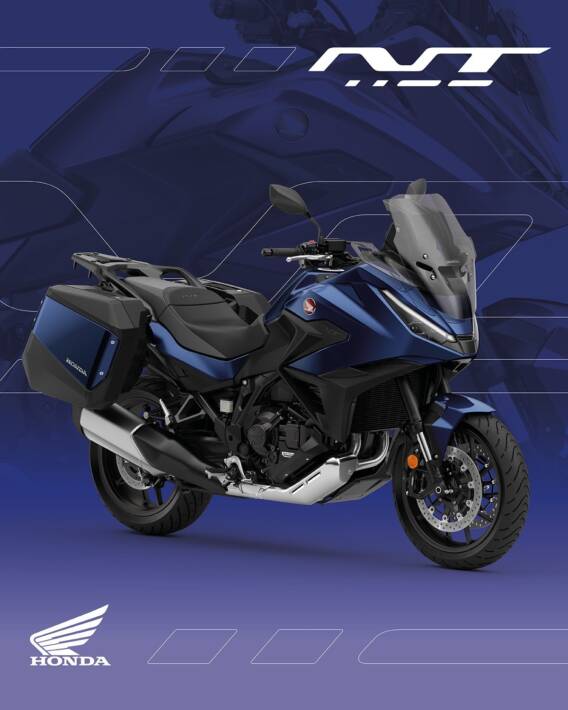
A 249kg bike (plus 12kg for the stock panniers) with just 100bhp is pretty sedate for 2024 (or for 2004 actually now we come to think on it). NT owners seem to think otherwise mind.
No word on price or availability as yet: expect more at the Milan show next month, or at the NEC Motorcycle Live show in mid-November. www.honda.co.uk/motorcycles.html
2025 Honda NT1100 tech specs
| NT1100 25YM | NT1100 DCT 25YM | NT1100 DCT Electronic Suspension 25YM | |
| ENGINE | |||
| Engine Type | Liquid cooled Four-Stroke, Eight Valve, Parallel Twin with 270° crank and uni cam | ||
| Engine Displacement | 1,084 cc | ||
| Bore x Stroke (mm) | 92 mm x 81.5 mm | ||
| Compression Ratio | 10.5 | ||
| Max. Power Output | 75.0 kW at 7,500 rpm | ||
| Max. Torque | 112 Nm at 5,500 rpm | ||
| Max Speed | 200 km/h | ||
| FUEL SYSTEM | |||
| Carburation | PGM-FI Fuel Injection | ||
| Fuel Tank Capacity | 20.4 L | ||
| Fuel Consumption | 5,0 L/100km | ||
| ELECTRICAL SYSTEM | |||
| Battery Type | Lithium-Ion | ||
| DRIVETRAIN | |||
| Clutch Type | Wet Multiplate Clutch | 2x Wet Multiplate Clutch | |
| Transmission Type | 6-speed Manual Transmission | 6-speed Dual Clutch Transmission | |
| Final Drive | Chain | ||
| FRAME | |||
| Frame Type | Semi – Double Cradle (Steel) Frame | ||
| CHASSIS | |||
| Dimensions (L´W´H) | 2,240 mm x 860 mm x 1,340 mm | ||
| Wheelbase | 1,535 mm | ||
| Caster Angle | 26.5° | ||
| Trail | 108 mm | ||
| Seat Height | 820 mm | ||
| Ground Clearance | 175 mm | ||
| Kerb Weight | 238 kg +12 kg Panniers | 248 kg +12 kg Panniers | 249 kg +12 kg Panniers |
| SUSPENSION | |||
| Suspension Front | SHOWA 43 mm SFF-BP type inverted telescopic fork with dial-style preload adjust, 150 mm stroke. | SHOWA 43 mm SFF-BP type inverted telescopic fork with dial-style preload adjust, 150 mm stroke. | SHOWA Telescopic inverted fork with an inner tube diameter of 43 mm, and an Electric controlled unit (SHOWA EERA) with compression and rebound dumping adjustments, 150 mm stroke |
| Suspension Rear | Monoblock aluminium swing arm with Pro-Link with SHOWA gas charged damper, hydraulic dial-style preload adjuster, 150 mm travel. | Monoblock aluminium swing arm with Pro-Link with SHOWA gas charged damper, hydraulic dial-style preload adjuster, 150 mm travel. | Monoblock aluminium swing arm with Pro-Link with SHOWA gas charged damper, hydraulic remote control preload adjuster and electronic control unit (SHOWA EERA) with compression and rebound damping adjustments 150 mm rear wheel travel |
| WHEELS | |||
| Wheels Front | 17M/C X MT3.50 Multi-spoke cast aluminium | ||
| Wheels Rear | 17M/C X MT5.50 Multi-spoke cast aluminium | ||
| Tyres Front | 120/70ZR17 M/C (58W) | ||
| Tyres Rear | 180/55ZR17 M/C (73W) | ||
| BRAKES | |||
| ABS Type | 2-channel IMU based cornering ABS | ||
| Brakes Front | Radial mounted four-piston brake calliper, 310 mm floating double disc | ||
| Brakes Rear | Single piston calliper, 256 mm single disc | ||
| INSTRUMENTS & ELECTRICS | |||
| Instruments | 6.5-inch TFT Touch Panel Multi information display & LCD meter | ||
| Headlight | LED | ||
| DRL | Yes | ||
| Taillight | LED | ||
| Connectivity | Apple Car Play & Android Auto | ||
| USB | USB-A | ||
| 12V Socket | Yes | ||
| Auto Winker Cancel | Yes | ||
| Quick Shifter | Optional | – | |
| Security System | HISS | ||
| Cruise Control | Yes | ||
| Riding mode | Tour, Urban, Rain, User 1 and User 2 | ||
| HSTC with integrated Wheelie Control | 3 Level + OFF | ||
| Rear lift control | Yes | ||
| Additional Features | Screen adjustable (167 mm adjustable range) | ||
